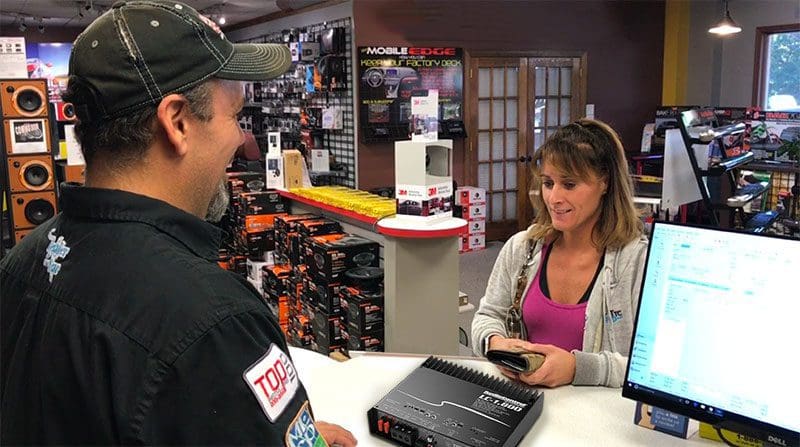 Shopping for car audio upgrades is as personal as shopping for a new car or new shoes. Each of us likes something different, has a different budget and different performance and style preferences. In the case of a new car, your options range from a solid and reliable daily driver in the $14,000 range to luxury and exotic vehicles costing well over $100,000. When it comes to a new radio, speakers, an amplifier or a subwoofer upgrade for your car, the price point differs just as much, as do the features and performance levels. In this article, we will provide some tips to prepare yourself to buy new car audio upgrades and ensure they are installed and configured reliably.
Shopping for car audio upgrades is as personal as shopping for a new car or new shoes. Each of us likes something different, has a different budget and different performance and style preferences. In the case of a new car, your options range from a solid and reliable daily driver in the $14,000 range to luxury and exotic vehicles costing well over $100,000. When it comes to a new radio, speakers, an amplifier or a subwoofer upgrade for your car, the price point differs just as much, as do the features and performance levels. In this article, we will provide some tips to prepare yourself to buy new car audio upgrades and ensure they are installed and configured reliably.
Shopping Online or at a Store
 A discussion about online shopping opens a monumental can of worms. One of the biggest differences between buying from an online retailer and a local independent specialist will be the level of after-sales service and support. If you buy new speakers online and you have a problem with them, you can try contacting the supplier. About all they can do is offer to let you send the speakers back (at your cost) and they will send you another set. When you deal with a local retailer, someone can go to your car and listen to the problem. The issue may not be the speakers at all. It could be the source unit, an amplifier or an installation issue. Likewise, if you buy something online and it doesn’t fit your vehicle, you will have to send it back (again, at your expense). If you buy speakers from a local shop, they can make sure you get the right size and that the units they install function perfectly.
A discussion about online shopping opens a monumental can of worms. One of the biggest differences between buying from an online retailer and a local independent specialist will be the level of after-sales service and support. If you buy new speakers online and you have a problem with them, you can try contacting the supplier. About all they can do is offer to let you send the speakers back (at your cost) and they will send you another set. When you deal with a local retailer, someone can go to your car and listen to the problem. The issue may not be the speakers at all. It could be the source unit, an amplifier or an installation issue. Likewise, if you buy something online and it doesn’t fit your vehicle, you will have to send it back (again, at your expense). If you buy speakers from a local shop, they can make sure you get the right size and that the units they install function perfectly.
Do-It-Yourself Installations
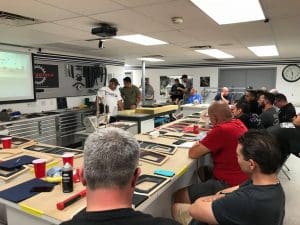 Make no doubt, most of the installers, technicians and fabricators who work at mobile electronics retailers got their start working on their vehicles in their driveway. In some cases, this passion for working on cars and trucks grew to include their friends’ vehicles, while others sought out training from companies like Installer Institute, Kingpin University, Mobile Solutions, or in the good old days, Mobile Dynamics. Whether an installer had formal training or extensive hands-on experience, most of them have continued to hone their skills and knowledge through ongoing training to deal with data network integration, handle factory audio systems with advanced tuning and learn about new cool and unique fabrication skills.
Make no doubt, most of the installers, technicians and fabricators who work at mobile electronics retailers got their start working on their vehicles in their driveway. In some cases, this passion for working on cars and trucks grew to include their friends’ vehicles, while others sought out training from companies like Installer Institute, Kingpin University, Mobile Solutions, or in the good old days, Mobile Dynamics. Whether an installer had formal training or extensive hands-on experience, most of them have continued to hone their skills and knowledge through ongoing training to deal with data network integration, handle factory audio systems with advanced tuning and learn about new cool and unique fabrication skills.
Whether you decide to pay for the expertise of a professional or attempt to install something yourself comes down to your comfort level. If you feel you can do the work safely and reliably, then, by all means, give it a try. If you don’t know how to access and confirm the correct wire connections, make electrical connections securely and safely and mount equipment in a way that ensures maximum performance and reliability, then ask your local shop to do the work. Don’t get in over your head, though; it’s easy to break plastic trim panels or short wires and damage electronic modules.
Preparing to Go Shopping
When it’s time to head out and shop for new audio equipment for your vehicle, you’ll need to bring a few items with you and do a little planning. First, you need to decide on a budget. How much money do you want to spend on the product? Set yourself two levels for this decision: an ideal price and an absolute maximum price. What if you’ve allowed $800 for a set of speakers, but you hear a set priced at $1,000 that sounds amazing? Leave yourself some wiggle room.
Set a budget for accessories as well. Here are some common accessories required for some of the major audio system upgrades:
Source Unit
- Mounting Kit
- Wire Harness Adapter
- Antenna Adapter
- Vehicle Integration Module *
Speakers
- Mounting Adapter
- Speaker Wire
- Sound Deadening
- Acoustic Coupling Rings
Subwoofer
- Subwoofer Enclosure
- Speaker Wire
- Mounting Screw/Hardware
Amplifier
- Power Wire
- Fuse Holder
- Interconnect Cables
- Remote Turn-On Wire
- Vehicle Integration Module *
*Many new vehicles use data connections between the factory radio and amplifier. To upgrade either of these components, you may need to purchase a data interface module. These modules need to programmed for the specific make, model and trim level of your vehicle to function properly.
Choosing a New Source Unit
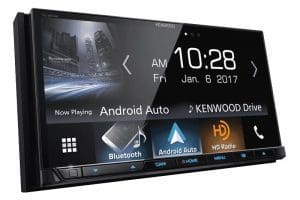 When it comes to source unit upgrades, the first thing you need to find out is whether or not you can replace the factory radio in the vehicle at all. Vehicles such as BMW, Mercedes-Benz, Mazda and many new Nissan vehicles have source units that can’t be removed.
When it comes to source unit upgrades, the first thing you need to find out is whether or not you can replace the factory radio in the vehicle at all. Vehicles such as BMW, Mercedes-Benz, Mazda and many new Nissan vehicles have source units that can’t be removed.
Once you have determined that you can replace the radio, you need to determine the features you want to add. These will depend on how old your vehicle is. Many new radios include Bluetooth for hands-free calling and audio streaming, HD Radio tuners and playback of MP3, WMA, AAC, WAC and FLAC digital audio files. If you choose a multimedia radio, the system may also play MPG, AVI and MKV video files, and it may include an input for a backup camera. Navigation is a very popular feature on multimedia radios, as is smartphone integration. Features like Android Auto and Apple CarPlay have been the most popular reason people upgrade their radios over the last few years.
Speaker Upgrades
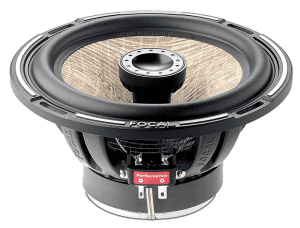 Perhaps the most important component in an audio system is the speakers. Speakers are the only link between your music source (radio, USB stick, streaming service or smartphone) and your ears. The quality of your speakers will determine the accuracy of your audio system. A speaker that produces a lot of distortion will color your music, detracting from the detail and realism of the listening experience.
Perhaps the most important component in an audio system is the speakers. Speakers are the only link between your music source (radio, USB stick, streaming service or smartphone) and your ears. The quality of your speakers will determine the accuracy of your audio system. A speaker that produces a lot of distortion will color your music, detracting from the detail and realism of the listening experience.
Auditioning speakers can be difficult, especially in an environment other than a car. What you can tell is the difference between one speaker and another. Listen for clarity and detail rather than overall tonal balance. Does a brush on a cymbal sound real or like sandpaper on a piece of steel? Do the highs blend realistically with the midrange and midbass region? Is the bass taut with great impact or sloppy and resonant? The differences you hear on a display board will remain consistent once the speakers are installed in your vehicle, even if the overall tonal balance changes.
Amplifiers and Processors
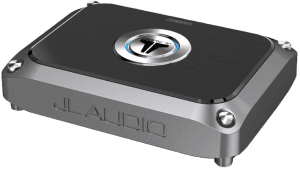
Choosing one amplifier over another can be difficult. Most people buy amplifiers based on power ratings. You don’t need a 400-watts-per-channel amp for your midrange drivers; 50 to 100 watts is usually quite adequate. For subwoofers, well, power is fun. Too much power can lead to damaging your speakers. If you never, ever want to damage a speaker, choose an amp rated for half of the continuous power rating of your speakers and subs. If you can control yourself and know when to turn down the volume if you hear distortion, you can choose an amp that offers the same power as the speaker is rated for. Use only the continuous power ratings on your speakers, not those bogus “max power” numbers.
Signal processing has become a lot more important and readily available in the last few years. As more and more shops learn how to quickly and efficiently tune an audio system using a DSP, consumers continue to reap the benefits of improved accuracy and realism from their sound system. If your budget can handle it, include a digital signal processor in your upgrade and make sure the system is designed to maximize the features offered by that unit.
What to Bring With You
 When you go shopping, bring one or two pieces of music that you know well. Before you leave your house, listen to that song on as many different sources as possible: your home theatre system, a portable Bluetooth speaker, headphones with your smartphone and your existing stereo. Think about what is different between each experience so you can listen for those elements as you audition new products.
When you go shopping, bring one or two pieces of music that you know well. Before you leave your house, listen to that song on as many different sources as possible: your home theatre system, a portable Bluetooth speaker, headphones with your smartphone and your existing stereo. Think about what is different between each experience so you can listen for those elements as you audition new products.
It will sound strange, but bring the vehicle you want to upgrade with you. Don’t bring your wife’s car. Many shops will want to look at your vehicle to confirm speaker sizes and the available space for equipment installation, and some salespeople will want to sit in the car with you to learn more about how you listen to your music. Seeing EQ or tone control adjustments you have made can provide a great deal of insight into future upgrades.
Choosing the Right Retailer
Not every car stereo shop is ideal for every type of project. Needing a new radio in a 1990 Honda Civic does not require the same skill as fabricating a set of speaker pods for in the A-pillars of a Tesla Model 3. Part of your shopping process is to quantify the skills and capabilities of the shop to find out whether they have the experience and tools required to do the work you want. Specialist Mobile Electronics retailers have typically invested tens of thousands of dollars in tools and training so that their staff is ready to take on any challenge.
You can also learn a lot about a shop by the kinds of questions the sales teams ask you and the type of information they provide. If the salesperson is reading features off of the box the product comes in, they may not be genuinely qualified to provide you with the exact solution you need. True experts in the industry dedicate hundreds of hours each year to learning about the products they sell to make sure they offer excellent value and reliability.
The Bonus Buying Experience
If the shop you are visiting has a demo vehicle, ask to have a listen. Even if you have a modest budget, you can learn a lot about the shop’s capabilities by listening to a demo car and looking at the work they have performed. Looking at wiring around amplifiers and the battery is a great way to understand their level of commitment to doing great work.
We could go on for another 10,000 words about how to shop for car audio equipment. This article serves as a primer for the experience and to give you a few ideas about what to look for. Visit your local mobile electronics retailer and listen carefully to their advice.
This article is written and produced by the team at www.BestCarAudio.com. Reproduction or use of any kind is prohibited without the express written permission of 1sixty8 media.
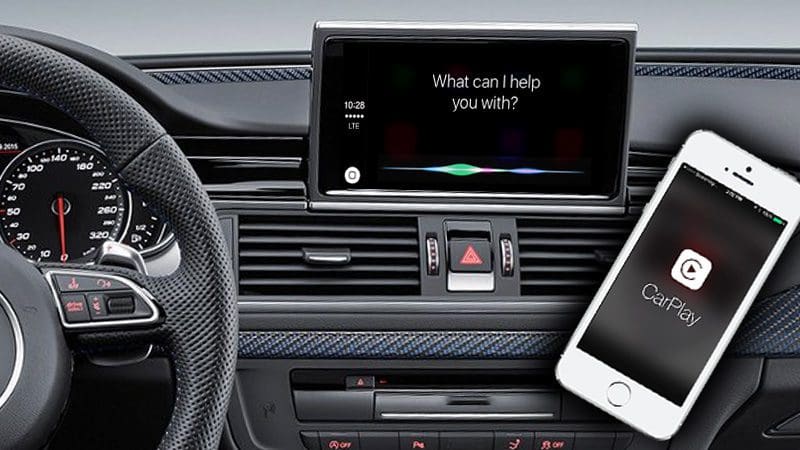 Apple CarPlay and Android Auto smartphone integration
Apple CarPlay and Android Auto smartphone integration  These infotainment solutions require two components to provide you with Internet-connected voice recognition access to your music, navigation and communication functions. First and foremost, the source unit in the vehicle needs to have the software built in. Including
These infotainment solutions require two components to provide you with Internet-connected voice recognition access to your music, navigation and communication functions. First and foremost, the source unit in the vehicle needs to have the software built in. Including  Up until recently, the connection between your phone and the radio for CarPlay and Android Auto has used a USB cable. With the introduction of wireless connectivity, things have changed. A Wi-Fi connection between your source unit and your smartphone replaces the wired connection for reliable, high-speed communication. Initially, a little more setup is required to get your smartphone and radio talking, but once configured, everything operates intuitively.
Up until recently, the connection between your phone and the radio for CarPlay and Android Auto has used a USB cable. With the introduction of wireless connectivity, things have changed. A Wi-Fi connection between your source unit and your smartphone replaces the wired connection for reliable, high-speed communication. Initially, a little more setup is required to get your smartphone and radio talking, but once configured, everything operates intuitively. In November 2017, Google announced the ability for devices running Android to run Android Auto as a stand-alone app without the need for an aftermarket source unit. At CES 2018, several aftermarket manufacturers announced they would include wireless Android Auto connectivity on their new source units.
In November 2017, Google announced the ability for devices running Android to run Android Auto as a stand-alone app without the need for an aftermarket source unit. At CES 2018, several aftermarket manufacturers announced they would include wireless Android Auto connectivity on their new source units.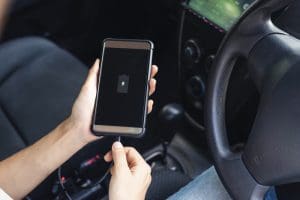 There are have been many discussions about the benefits and drawbacks of wireless connectivity. The biggest point of debate is around phone charging. In most cases, drivers take advantage of the ability to charge their phones when they get in their vehicles as they travel. For most people, this requires that the USB cable is connected to their phone. With that said, the Apple iPhone 8, 8 Plus and X include wireless charging. On the Android side, recent devices from Samsung, LG, Google, Microsoft and Blackberry include wireless charging.
There are have been many discussions about the benefits and drawbacks of wireless connectivity. The biggest point of debate is around phone charging. In most cases, drivers take advantage of the ability to charge their phones when they get in their vehicles as they travel. For most people, this requires that the USB cable is connected to their phone. With that said, the Apple iPhone 8, 8 Plus and X include wireless charging. On the Android side, recent devices from Samsung, LG, Google, Microsoft and Blackberry include wireless charging.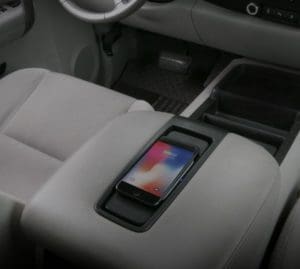 Flipping back to the cons side of the debate, you need a wireless charging base in your vehicle to take advantage of the wireless charging feature. Vehicles from Audi, BMW, Chrysler, Ford, Honda, Mercedes-Benz, Toyota, Volkswagen and Volvo include Qi compatible charging solutions. Qi is the standard for wireless charging for Apple devices.
Flipping back to the cons side of the debate, you need a wireless charging base in your vehicle to take advantage of the wireless charging feature. Vehicles from Audi, BMW, Chrysler, Ford, Honda, Mercedes-Benz, Toyota, Volkswagen and Volvo include Qi compatible charging solutions. Qi is the standard for wireless charging for Apple devices.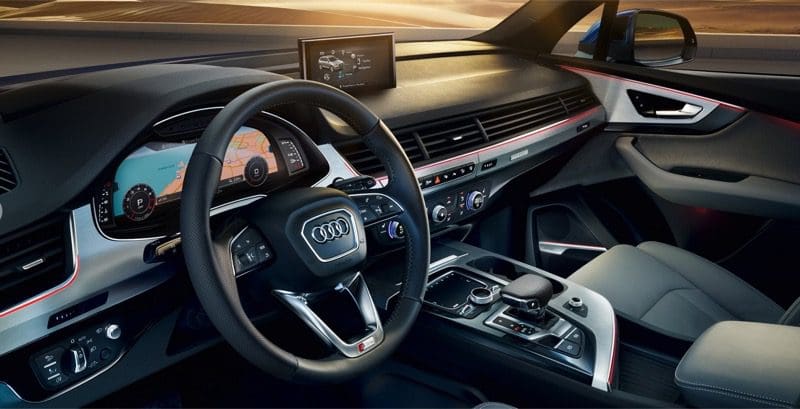 Did you know that you can get great sound in your car or truck using your
Did you know that you can get great sound in your car or truck using your 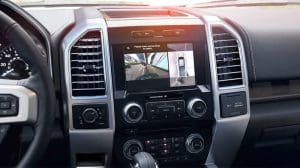 Fewer and fewer cars today have radios that only play music. They show
Fewer and fewer cars today have radios that only play music. They show 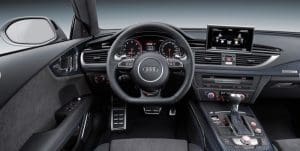 In the good old days, factory audio systems included a radio, a simple analog amplifier and speakers. If you had a luxury vehicle, the manufacturer may have opted to include a subwoofer for a little more (but still not enough) bass. The radio was a simple affair with a tuner, CD player, auxiliary input and maybe a USB port and satellite radio connection. The output of the radio either powered the speakers in the car directly or fed a signal to a small amplifier.
In the good old days, factory audio systems included a radio, a simple analog amplifier and speakers. If you had a luxury vehicle, the manufacturer may have opted to include a subwoofer for a little more (but still not enough) bass. The radio was a simple affair with a tuner, CD player, auxiliary input and maybe a USB port and satellite radio connection. The output of the radio either powered the speakers in the car directly or fed a signal to a small amplifier.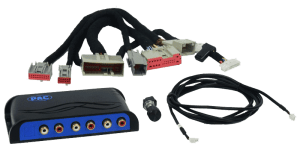 Let’s look at three common upgrades that mobile electronics retailers across the nation perform every day. Since 2009, the Ford F-150 has come equipped with an amplifier in the back of the truck that includes the master volume control for the system as well as equalization and crossovers for the speakers. Upgrading this popular vehicle required summing audio signals coming out of the amp back together and removing signal processing.
Let’s look at three common upgrades that mobile electronics retailers across the nation perform every day. Since 2009, the Ford F-150 has come equipped with an amplifier in the back of the truck that includes the master volume control for the system as well as equalization and crossovers for the speakers. Upgrading this popular vehicle required summing audio signals coming out of the amp back together and removing signal processing.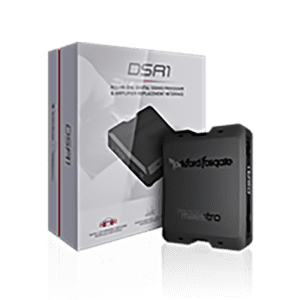 Another popular audio system upgrade interface is the iDatalink Maestro DSR1. Automotive Data Solutions partnered with the audio experts at Rockford Fosgate to develop this interface and tuning solution. ADS are experts in the field of CAN communication protocols, thanks to their experience with remote car starter integration modules.
Another popular audio system upgrade interface is the iDatalink Maestro DSR1. Automotive Data Solutions partnered with the audio experts at Rockford Fosgate to develop this interface and tuning solution. ADS are experts in the field of CAN communication protocols, thanks to their experience with remote car starter integration modules.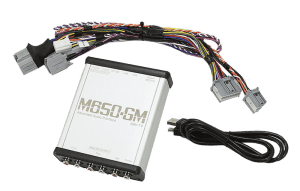 NAV-TV has created an impressive solution that is compatible with Chevy, GMC and Cadillac vehicles with the MyLink and Cue-equipped 4-inch (IO4) and 8-inch (IO5/IO6) source units. This interface connects to the MOST (Media Oriented System Transport) digital signal that runs from the factory radio to the amplifier in these vehicles to extract six channels of full-bandwidth audio that is free from equalization or signal delay.
NAV-TV has created an impressive solution that is compatible with Chevy, GMC and Cadillac vehicles with the MyLink and Cue-equipped 4-inch (IO4) and 8-inch (IO5/IO6) source units. This interface connects to the MOST (Media Oriented System Transport) digital signal that runs from the factory radio to the amplifier in these vehicles to extract six channels of full-bandwidth audio that is free from equalization or signal delay. One product that most
One product that most Aftermarket sound deadening products work the same way. Most sound deadening is sold in sheets or rolls. The material is very dense and has one surface that includes a strong adhesive. Your installer can apply the material to flat metal surfaces like the doors, floor, roof, firewall, rear fenders and trunk of your vehicle.
Aftermarket sound deadening products work the same way. Most sound deadening is sold in sheets or rolls. The material is very dense and has one surface that includes a strong adhesive. Your installer can apply the material to flat metal surfaces like the doors, floor, roof, firewall, rear fenders and trunk of your vehicle.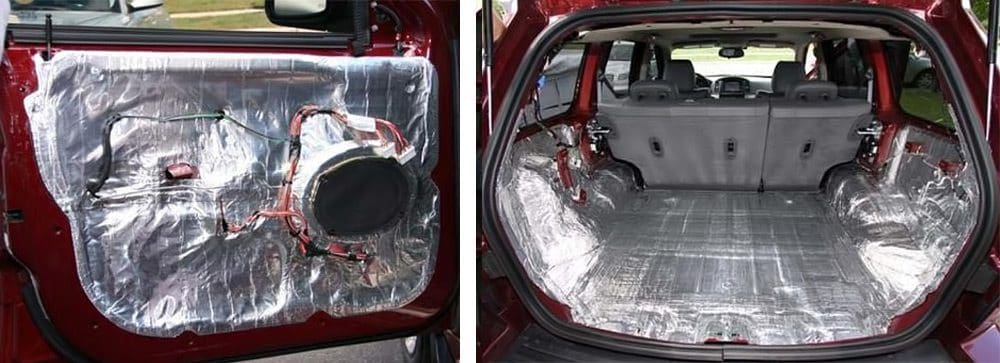
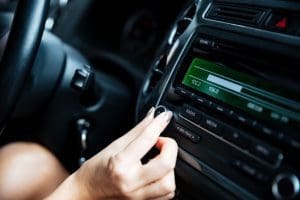 First, by simply reducing the background noise in your car or truck, you improve the effective signal-to-noise ratio of your stereo. What does this mean? Having less background noise makes it easier for you to hear the quiet parts of your music. Imagine if you were listening to a track at a volume level of 100dB. If you have background noise level of 95 dB, any portion of the song that is around the 95dB level will have to battle with the background noise to be heard. If you can reduce the noise level in your car to 90 dB, you can hear more of your music.
First, by simply reducing the background noise in your car or truck, you improve the effective signal-to-noise ratio of your stereo. What does this mean? Having less background noise makes it easier for you to hear the quiet parts of your music. Imagine if you were listening to a track at a volume level of 100dB. If you have background noise level of 95 dB, any portion of the song that is around the 95dB level will have to battle with the background noise to be heard. If you can reduce the noise level in your car to 90 dB, you can hear more of your music.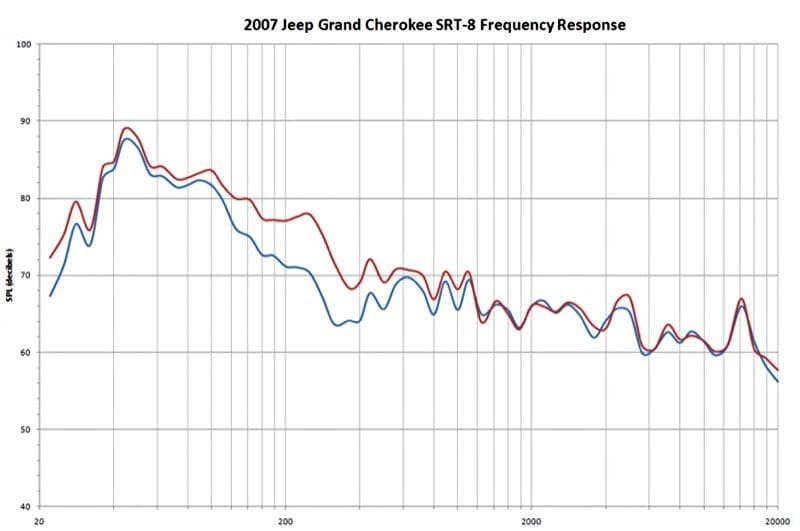
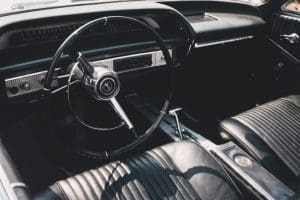 If you watch TV shows like “Detroit Muscle,” “Truck Tech” or “Overhaulin’,” you’ve undoubtedly seen the guys apply a thorough layer of sound deadening material to the floor of some of the coolest hot rods ever. Not only do these materials help keep your vehicle quiet, but they also help block heat from the road, engine, transmission and exhaust from heating up the interior of your vehicle. Dynaliner from Dynamic Control of North America, D-Mat from Design Engineering and the aptly named Heat Barrier from Thermo-Tec are specifically designed to prevent heat transfer into the interior of your vehicle.
If you watch TV shows like “Detroit Muscle,” “Truck Tech” or “Overhaulin’,” you’ve undoubtedly seen the guys apply a thorough layer of sound deadening material to the floor of some of the coolest hot rods ever. Not only do these materials help keep your vehicle quiet, but they also help block heat from the road, engine, transmission and exhaust from heating up the interior of your vehicle. Dynaliner from Dynamic Control of North America, D-Mat from Design Engineering and the aptly named Heat Barrier from Thermo-Tec are specifically designed to prevent heat transfer into the interior of your vehicle. There are two common problems that occur with damping materials. First, they simply may not have a strong adhesive or they require extensive surface preparation to stay adhered to a panel. Some damping materials will stick to slightly dusty surfaces without any problems. The second and more important concern is that the material itself is thermally stable. You don’t want the deadening to peel off when it gets hot in the summer. We’ve heard of many cases where vehicle carpets and headliners have needed to be replaced because damping materials turned to a liquid and contaminated them.
There are two common problems that occur with damping materials. First, they simply may not have a strong adhesive or they require extensive surface preparation to stay adhered to a panel. Some damping materials will stick to slightly dusty surfaces without any problems. The second and more important concern is that the material itself is thermally stable. You don’t want the deadening to peel off when it gets hot in the summer. We’ve heard of many cases where vehicle carpets and headliners have needed to be replaced because damping materials turned to a liquid and contaminated them.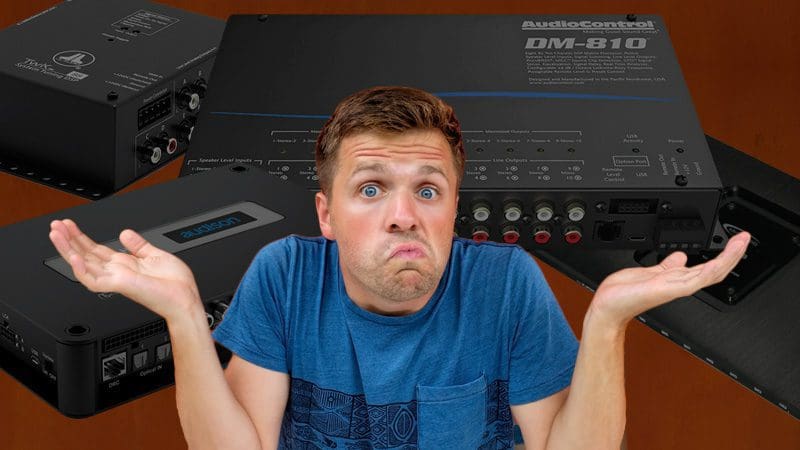
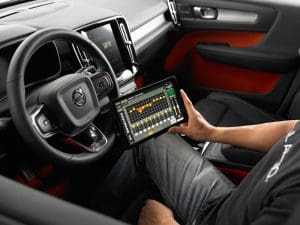 In a nutshell, a DSP uses a microcontroller that is designed specifically to manipulate audio signals in the digital domain. Pretty much all of the DSP devices on the market include crossovers, equalizers and signal delay features that we can use to optimize the performance of your sound system.
In a nutshell, a DSP uses a microcontroller that is designed specifically to manipulate audio signals in the digital domain. Pretty much all of the DSP devices on the market include crossovers, equalizers and signal delay features that we can use to optimize the performance of your sound system. At the simplest level, a DSP can be considered a glorified yet extremely precise tone control. When you combine the features of a processor with measurements from a real-time analyzer, a properly trained technician can dramatically improve the tonal balance and accuracy of your audio system. Vocals and instruments will sound more as though you are in the presence of a live performance as opposed to listening to a recording. Expert technicians can use stereo equalization to improve the staging and imaging characteristics of your sound system, helping to increase the realism of the listening experience further.
At the simplest level, a DSP can be considered a glorified yet extremely precise tone control. When you combine the features of a processor with measurements from a real-time analyzer, a properly trained technician can dramatically improve the tonal balance and accuracy of your audio system. Vocals and instruments will sound more as though you are in the presence of a live performance as opposed to listening to a recording. Expert technicians can use stereo equalization to improve the staging and imaging characteristics of your sound system, helping to increase the realism of the listening experience further.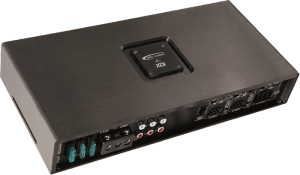
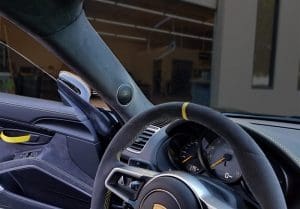 Let’s continue with our three-way system example. In many systems, the tweeters are mounted at the top of the door, in the sail panel, in the dash or on the A-pillar. Midrange drivers in a system like that are typically 6.5 inches in diameter and are installed in the factory door location. Finally, woofers typically require an enclosure and are mounted in the trunk, cargo area or under the rear seat of a pickup truck. The distance between the listener and each speaker is different, as is the difference between the left and right speakers. These pathlength differences result in us hearing the closest speaker first, which makes our minds think that that is the source of the majority of what we are hearing.
Let’s continue with our three-way system example. In many systems, the tweeters are mounted at the top of the door, in the sail panel, in the dash or on the A-pillar. Midrange drivers in a system like that are typically 6.5 inches in diameter and are installed in the factory door location. Finally, woofers typically require an enclosure and are mounted in the trunk, cargo area or under the rear seat of a pickup truck. The distance between the listener and each speaker is different, as is the difference between the left and right speakers. These pathlength differences result in us hearing the closest speaker first, which makes our minds think that that is the source of the majority of what we are hearing.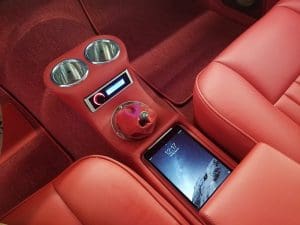
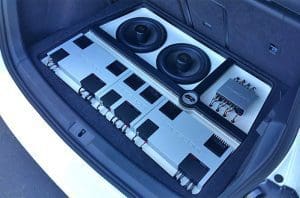 Well, yes and no. Good quality processors start around $400 plus installation and require at least an hour to configure in most vehicles. If you have a complex multi-channel system, you may need a DSP with more input and output channels and additional time to configure the system in your vehicle.
Well, yes and no. Good quality processors start around $400 plus installation and require at least an hour to configure in most vehicles. If you have a complex multi-channel system, you may need a DSP with more input and output channels and additional time to configure the system in your vehicle.